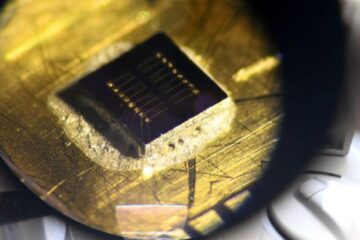Electronic and Internet Health Tools May Decrease In-Person Physician Visits

Researchers at the Johns Hopkins Bloomberg School of Public Health and The Commonwealth Fund think so. Based on their analysis of recent trends in digital health care and a review of the scientific literature, the authors conclude that patients’ future use of physician services will change dramatically as electronic health records and consumer e-health “apps” proliferate. The findings appear in the November issue of the journal Health Affairs.
“The results of our study are important because they provide a forward looking snapshot of how health IT will profoundly impact the American health care workforce over the next decade or two,” said the study's lead author Jonathan Weiner, DrPH, professor of Health Policy and Management at the Johns Hopkins Bloomberg School and director of the Center for Population Health Information Technology (CPHIT).
Today, in large part due to federal “meaningful use” subsidies, over 70 percent of office-based physicians are making use of electronic health records. Only a decade ago, the figure was about 10 percent. Also, consumers are increasingly using the Internet and mobile phones to manage their health. In the not-too-distant future, it is likely that the majority of patients’ interactions with the health care system will be digitally mediated.
The impact of health IT on the care delivery environment will be far-reaching. Weiner and colleagues estimate that when electronic health records and other e-health systems are fully implemented in just 30 percent of community-based physicians’ offices, U.S. doctors will be able to meet the demands of about 4-9 percent more patients than they can today due to increased efficiency. When supported by health IT, delegation of care to nurse practitioners and physician assistants could reduce the future U.S. demand for physicians by an additional 4-7 percent.
Along the same lines, IT, such as “e-referral” systems, could help reduce the national demand for specialists by another 2-5 percent as specialist physicians are able to delegate care to generalists. Health-IT, such as telemedicine and secure patient/doctor digital communication, could help address regional doctor shortages by enabling 12 percent of care to be delivered remotely by doctors living in other locations. The forecasts could be much higher, if doctors and patients adopted comprehensive e-health and IT more widely. “When all of these likely effects are added together, it is clear that health IT will help resolve future physician shortages that many believe are around the corner,” said Professor Weiner.
Although there is considerable room for further empirical research on health IT’s impact on health care workforce market dynamics, the authors conclude that few trends will change the future face of American health care as widely as health IT and e-health. “It is essential that workforce planning analyses provide policymakers and stakeholders with evidence and ideas that support rational decision making and preparation for a future that is likely to be dramatically different from the past,” said study co-author Dr. David Blumenthal MD, MPP, president of The Commonwealth Fund and the former National Coordinator for Health IT for the U.S. Department of Health and Human Services.
The authors reviewed health informatics and health services research literature through June 2013 using MEDLINE, the Cochrane Database and the Agency for Healthcare Research and Quality’s database on health IT.
“Predicting the Impact of Health Information Technology and e-Health On the Future Demand for Physician Services,” appearing in both the November online and print issue of Health Affairs, was written by Jonathan P. Weiner, DrPH; Susan Yeh, MA, a PhD candidate in Health Policy and Management at the Johns Hopkins Bloomberg School of Public Health; and David Blumenthal, MD, MPP, president of The Commonwealth Fund.
Media Contact
More Information:
http://www.jhsph.eduAll latest news from the category: Health and Medicine
This subject area encompasses research and studies in the field of human medicine.
Among the wide-ranging list of topics covered here are anesthesiology, anatomy, surgery, human genetics, hygiene and environmental medicine, internal medicine, neurology, pharmacology, physiology, urology and dental medicine.
Newest articles

Sea slugs inspire highly stretchable biomedical sensor
USC Viterbi School of Engineering researcher Hangbo Zhao presents findings on highly stretchable and customizable microneedles for application in fields including neuroscience, tissue engineering, and wearable bioelectronics. The revolution in…

Twisting and binding matter waves with photons in a cavity
Precisely measuring the energy states of individual atoms has been a historical challenge for physicists due to atomic recoil. When an atom interacts with a photon, the atom “recoils” in…

Nanotubes, nanoparticles, and antibodies detect tiny amounts of fentanyl
New sensor is six orders of magnitude more sensitive than the next best thing. A research team at Pitt led by Alexander Star, a chemistry professor in the Kenneth P. Dietrich…





















